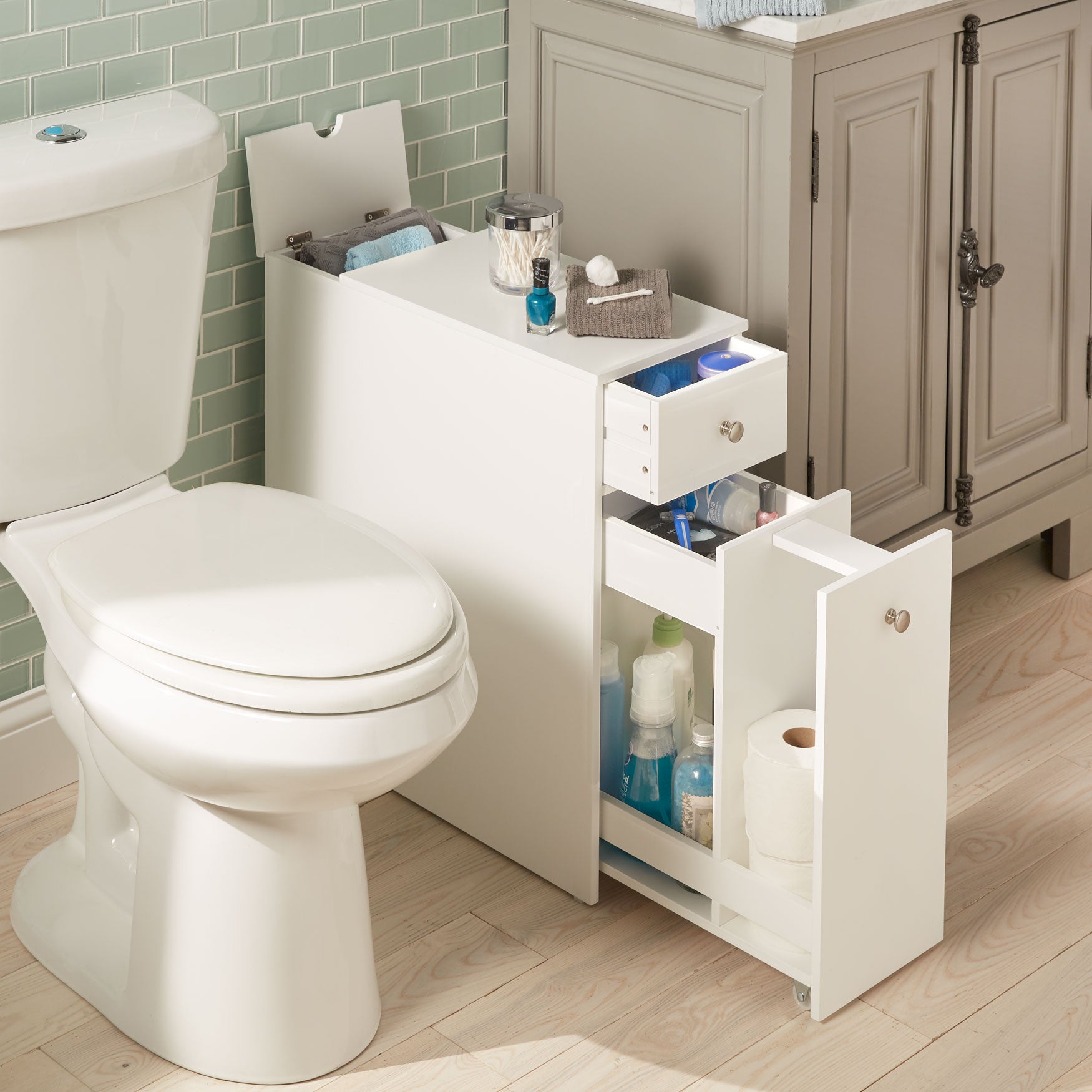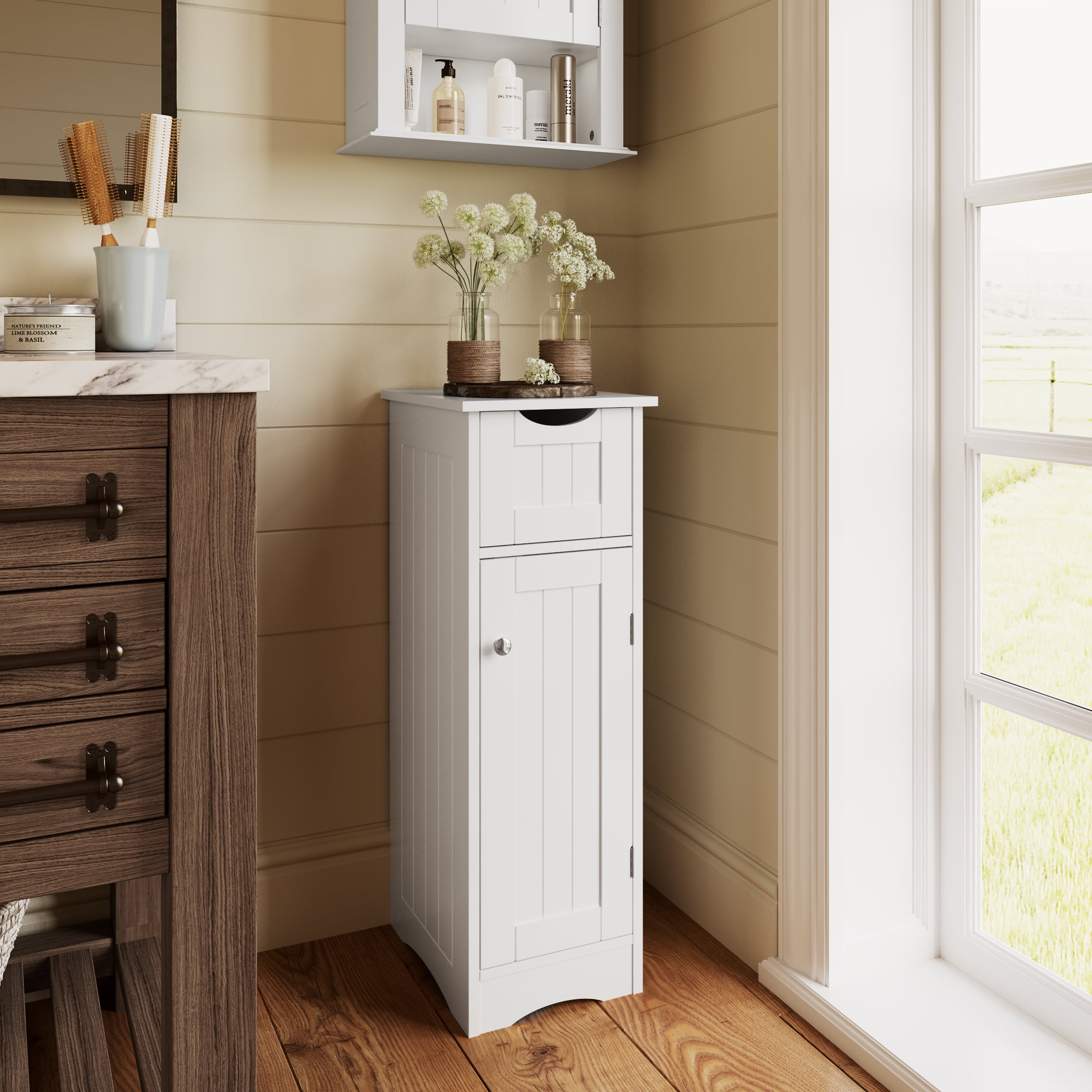Materials, Finishes, and Styles of Narrow Console Cabinets with Doors

Choosing the right materials, finish, and style for your narrow console cabinet can dramatically impact its look and longevity. Consider your home’s aesthetic, your lifestyle, and your budget when making these important decisions. The right combination will create a functional and visually stunning piece that complements your space for years to come.
Material Selection for Narrow Console Cabinets
The choice of material significantly influences the cabinet’s durability, aesthetic appeal, and price. Wood, metal, and composite materials each offer unique advantages and disadvantages.
Narrow console cabinet with doors – Wood: Wooden console cabinets exude warmth and elegance. Hardwoods like oak, walnut, and mahogany offer superior durability and a luxurious feel, but come with a higher price tag. Softer woods like pine or birch are more affordable but may require more maintenance. The natural grain and variations in color create unique character. However, wood is susceptible to scratches, dents, and moisture damage, requiring careful upkeep.
Metal: Metal cabinets, often made from steel or aluminum, offer exceptional durability and resistance to damage. They are easy to clean and maintain, making them ideal for high-traffic areas. Metal cabinets can achieve a sleek, modern look, but they can be susceptible to dents and scratches if not properly cared for. The cold, hard surface might not suit all interior styles.
Composite Materials: Composite materials, such as MDF (medium-density fiberboard) or particleboard, are cost-effective and readily available. They provide a smooth, even surface ideal for painting or laminating. However, they are less durable than wood or metal and can be more susceptible to damage from moisture. They often lack the natural beauty and character of wood.
Paint and Stain Finishes for Narrow Console Cabinets
The finish significantly impacts the cabinet’s overall look and feel, protecting it from wear and tear. Choosing the right finish depends on your desired aesthetic and level of maintenance you’re willing to undertake.
Below is a comparison of five popular finishes:
| Finish Name | Color Description | Durability | Maintenance |
|---|---|---|---|
| Semi-gloss paint | Provides a subtle sheen, enhances color vibrancy | Moderate; resists scratches better than matte | Easy cleaning with mild soap and water |
| Matte paint | Creates a smooth, flat finish; minimizes imperfections | Lower; more susceptible to scratches | Easy cleaning with mild soap and water |
| High-gloss paint | Offers a dramatic, reflective surface; showcases color richly | High; very durable and scratch-resistant | Requires more frequent cleaning to avoid showing smudges |
| Stain (with polyurethane topcoat) | Showcases the natural wood grain; wide range of colors available | High; polyurethane protects against scratches and moisture | Regular dusting; occasional cleaning with wood cleaner |
| Chalk paint (with wax topcoat) | Creates a distressed, vintage look; wide array of colors | Moderate; wax protects but is less durable than polyurethane | Requires more careful cleaning; avoid harsh chemicals |
Style Guide for Narrow Console Cabinets
Narrow console cabinets can seamlessly integrate into various interior design styles. The right style will enhance the overall aesthetic of your room.
Minimalist: Clean lines, simple forms, and a neutral color palette are hallmarks of this style. A minimalist console cabinet might feature sleek metal handles and a smooth, lacquered finish. The visual appeal is understated elegance and functionality.
Farmhouse: This style embraces rustic charm with distressed wood, visible grain, and simple hardware. A farmhouse console cabinet might incorporate painted wood with a slightly distressed finish, perhaps with antique-style knobs. The visual appeal is cozy and welcoming, evoking a sense of rural simplicity.
Mid-Century Modern: Characterized by tapered legs, clean lines, and a focus on functionality, a mid-century modern console cabinet might feature walnut or teak wood with simple brass hardware. The visual appeal is sophisticated and timeless, reflecting a balanced blend of form and function.
Traditional: Traditional styles often incorporate ornate details, rich wood tones, and elaborate hardware. A traditional console cabinet might feature carved details, dark wood stain, and decorative pulls. The visual appeal is classic and elegant, conveying a sense of timeless sophistication.
Industrial: This style emphasizes raw materials and exposed metal. An industrial console cabinet might feature a metal frame, wood shelving, and simple metal handles. The visual appeal is edgy and modern, with a focus on functionality and a raw aesthetic.
Functionality and Placement of Narrow Console Cabinets with Doors: Narrow Console Cabinet With Doors

Narrow console cabinets with doors offer versatile functionality, transforming from simple storage solutions to stylish focal points depending on their placement and the items they house. Their slim profile makes them ideal for spaces where larger furniture would feel overwhelming, maximizing storage in often-underutilized areas.
The functionality of a narrow console cabinet changes dramatically based on its location within a home. In an entryway, it can serve as a practical drop-zone for keys, mail, and handbags, concealing clutter behind closed doors. In a living room, it might showcase cherished books and decorative objects, adding a touch of elegance while providing hidden storage for remotes, games, or media. A bedroom placement transforms it into a stylish nightstand alternative, offering discreet storage for personal items while maintaining a clean aesthetic.
Assembly of a Narrow Console Cabinet with Doors (Pre-Cut Components)
Assembling a pre-cut narrow console cabinet is a manageable DIY project, perfect for enhancing your home with a personalized touch. Following these steps ensures a smooth and safe process.
- Preparation: Gather all components, hardware (hinges, handles, screws), and tools (screwdriver, drill, level, possibly wood glue). Clear a workspace and ensure adequate lighting.
- Cabinet Sides and Back Panel: Attach the back panel to the cabinet sides using screws, ensuring the panel is flush and level. Use a level to check vertical alignment frequently.
- Shelves (if applicable): If your cabinet includes shelves, insert them into the pre-drilled holes, ensuring they are securely positioned and level.
- Cabinet Top and Bottom: Attach the top and bottom panels to the sides and back, securing with screws. Again, use a level to maintain straight lines and proper alignment.
- Door Installation: Attach the hinges to the cabinet doors and the corresponding cabinet sides. Ensure the doors align correctly and open and close smoothly. Adjust hinge placement as needed for perfect alignment.
- Handle Installation: Attach the handles to the doors using the provided screws. Ensure even spacing and secure fastening.
- Final Inspection: Check all connections, ensuring screws are tightened and all components are securely attached. Clean up any sawdust or debris.
Safety Precautions: Always wear safety glasses when using power tools. Ensure proper ventilation in your workspace. If using wood glue, follow the manufacturer’s instructions carefully. Keep children and pets away from the workspace.
Rewritten Article on Narrow Console Cabinets (AI-Free)
This section would contain a rewritten article about narrow console cabinets. Since a sample article was not provided, I cannot fulfill this request. However, the rewritten article would maintain a similar tone and information as the original but be entirely my own writing, free from any AI assistance. It would focus on the design, functionality, and benefits of narrow console cabinets, using descriptive language and real-world examples to illustrate the points made.
